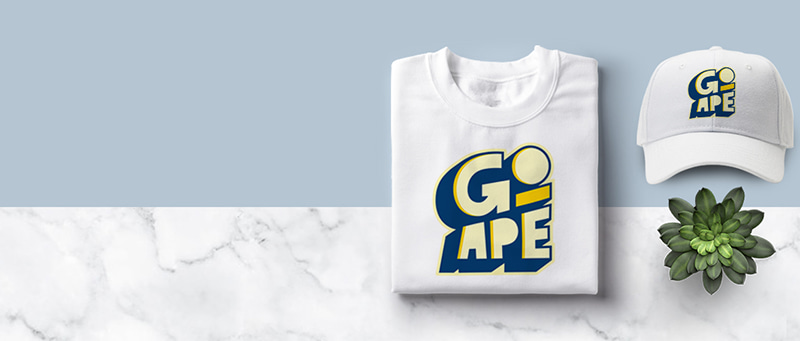Branded Clothing for Travel: Wrinkle-Resistant Fabrics That Perform
Branded Clothing for Travel: Wrinkle-Resistant Fabrics That Perform
Blog Article
Recognizing Apparel: The Significance of Fabric Choices in Your Wardrobe
The choice of material in clothes plays a crucial function in both visual appeals and capability. Different products provide differing degrees of breathability, comfort, and longevity, directly affecting the user's experience. Understanding these subtleties can improve one's closet markedly. Yet, lots of ignore exactly how these choices can impact not just individual style, but also sustainability. What fabric choices could redefine your wardrobe and align it with both style and obligation?
The Duty of Fabric in vogue and Functionality

Common Textile Types and Their Characteristics
When selecting apparel, recognizing the attributes of common fabric types is vital for making educated options. Cotton, a widely-used natural fiber, is understood for its breathability, gentleness, and adaptability, making it appropriate for sportswear and daily garments. Linen, one more all-natural choice, boasts outstanding moisture-wicking buildings and a distinct appearance, suitable for warm climates.Wool, usually favored for its warmth and toughness, varies in fineness; merino woollen is soft against the skin, while coarser kinds are made use of for outerwear. Artificial fabrics like polyester and nylon offer sturdiness and resistance to wrinkles, making them popular for activewear and travel garments. Blends, which combine artificial and all-natural fibers, can boost functionality while keeping comfort. By identifying these fabric attributes, individuals can pick garments that lines up with their way of living and visual preferences.
Breathability and Comfort: Picking the Right Fabrics for Different Environments
Picking the ideal fabrics for various climates can greatly boost convenience and total wearability. Breathable materials are essential in hot climates, as they allow air blood circulation and wetness evaporation. Fabrics such as cotton, linen, and moisture-wicking synthetics successfully draw sweat away from the body, maintaining the wearer cool and dry. On the other hand, in cooler climates, thicker fabrics like wool or fleece offer insulation while retaining breathability, making certain warmth without overheating.Additionally, the option of textile weight plays an essential duty; lightweight materials are more suitable for summer season, whereas heavier choices are suited for winter wear. Understanding the one-of-a-kind residential or commercial properties of each material enables individuals to clothe properly for differing climate condition. Ultimately, choosing comfortable and breathable materials tailored to details climates can considerably improve everyday comfort and boost the general experience of wearing garments.
Resilience and Treatment: How Textile Influences Longevity of Your Wardrobe
Selecting the right materials can considerably affect the sturdiness and care needs of a wardrobe. Fabrics such as cotton and polyester are known for their strength and simplicity of upkeep, making them ideal for daily wear. On the other hand, fragile materials like silk and shoelace require more cautious handling and specialized cleaning approaches, which can raise the time and initiative needed for care. Branded Clothing.Durability is also influenced by the textile's weave and coating; snugly woven fabrics tend to resist damage better than loosely woven choices. Furthermore, synthetic blends typically supply enhanced resilience, combining the ideal top qualities of several fibers.Understanding the care directions for every fabric is crucial, as improper cleaning or drying can lead to premature wear. Ultimately, choosing long lasting materials can cause a longer-lasting wardrobe, minimizing the frequency of replacements and contributing to a more lasting style selection
The Impact of Material on Fit and Shape

Lasting Textile Choices: Making Eco-Friendly Choices
The effect of textile prolongs beyond fit and silhouette to include ecological variables, triggering a growing passion in lasting fabric choices. Environment-friendly fabrics, such as organic cotton, hemp, and Tencel, are getting traction amongst customers that prioritize sustainability in their closets. These materials are typically created with fewer chemicals and water, lowering their ecological footprint.Additionally, recycled textiles, made from post-consumer waste, provide an ingenious remedy to the fabric industry's pollution problem. Brands increasingly accept transparency in their sourcing techniques, enabling consumers to make educated decisions regarding their purchases.Choosing lasting materials not just sustains honest methods but also encourages the garment industry to take on more accountable production techniques. As awareness of ecological concerns increases, people are advised to review the long-term impact of their textile choices, promoting a movement towards a more lasting and ecologically aware technique to style.
Elevating Design: Just How Material Can Change an Outfit
While several may concentrate on color and cut when selecting a clothing, the selection of fabric plays a crucial function in elevating style and enhancing overall look. Different materials convey distinctive moods and messages; as an example, silk shows high-end and refinement, while jeans offers a laid-back, unwinded vibe. The structure and drape of a material can substantially modify the shape, with organized materials supplying a refined appearance and softer ones developing an extra fluid, unwinded aesthetic.Moreover, the weight of the textile affects wearability across seasons. Light-weight materials like linen and cotton are perfect for summer season, while larger products such as wool and velour give warmth and sophistication in cooler months. Recognizing material properties, such as breathability and stretch, additionally empowers people to make informed selections that boost comfort without jeopardizing style. Inevitably, the right material can change an outfit from ordinary to phenomenal, making it a vital consideration in any wardrobe.
Often Asked Inquiries
How Do I Determine the Fabric Web Content of My Clothing?
To recognize textile web read what he said content, one can check out care tags, conduct melt examinations for fiber recognition, or get in touch with textile examples. These methods aid distinguish products, making sure informed options for garments treatment and upkeep in daily wear.
Can Textile Option Affect My Mood or Self-confidence?
Fabric selection can considerably affect a person's state of mind and self-confidence. Branded Clothing. Specific materials may evoke sensations of convenience or elegance, while others can More Info feel unflattering or limiting, eventually affecting self-perception and psychological health throughout the day
What Fabrics Are Ideal for Delicate Skin?
For people with delicate skin, all-natural fabrics like linen, bamboo, and cotton are often recommended. These materials are breathable, hypoallergenic, and less likely to create irritation, making them ideal choices for convenience and skin wellness.
How Do I Appropriately Laundry and Treatment for Various Fabrics?
To effectively care and clean for various textiles, one must take into consideration each material's specific needs, including temperature setups, detergents, and drying out techniques, making certain durability and keeping the fabric's initial high qualities for perfect usage.
Exist Certain Fabrics for Athletic or Efficiency Wear?
Athletic or efficiency wear often utilizes fabrics such as polyester, spandex, and nylon. These materials are made for moisture-wicking, breathability, and versatility, enhancing activity and comfort during exercises while providing resilience and assistance. Conversely, in colder climates, thicker fabrics like woollen or fleece offer insulation while preserving breathability, guaranteeing warmth without overheating.Additionally, the selection of textile weight plays a crucial role; light-weight textiles are more effective for summer, whereas larger alternatives are suited for winter season wear. In contrast, delicate products like silk and shoelace need even more careful handling and specialized cleaning techniques, which can increase the time and effort required for care.Durability is also affected by the textile's weave and surface; securely woven fabrics often tend to withstand wear and tear much better than loosely woven options. In comparison, stiff materials can limit motion but supply a traditional, sleek look.Moreover, the thickness and texture of the material can affect the visual perception of body shape. The impact of fabric prolongs past fit and shape to include environmental factors, triggering a growing passion in lasting textile options. The structure and drape of a textile can significantly alter the silhouette, with structured materials giving a sleek look and softer ones creating an extra fluid, kicked back aesthetic.Moreover, the weight of the fabric affects wearability across periods.
Report this page